This blog will cover ISO 9001 clause 5. This comes as part of the mini-series where the ISO 9001 standard is closely examined, and I want to give more information about the actual text that is available in the standard of ISO 9001:2015 version relating to clause 5.
This mini-series can be followed either through my blogs, where you can read all about it, or listen to the videos on my Youtube channel.
ISO 9001 Clause 5.1
ISO 9001 clause 5 starts with clause 5 .1 which is leadership and commitment. ISO 9001 clause 5 .1 states that top management shall demonstrate leadership and commitment with respect to the quality management system, okay, which is a statement in itself, okay, and before actually reading all of the ways in which top management can show commitment to the quality management system, I think that as human beings all of us have the intuition to be able to understand and to see if top management is committed to the management system or not, okay, so if top management is actively involved in the meetings, okay, they are actively involved in the audit process, for example, with the certification body, if they are speaking about ways in which they’d like to improve their organization, that is enough commitment.
If on the other hand, the managing director, for example, or some individual from the management of the organization does not even show remote signs of interest in being present or in giving that input in audits or throughout the implementation process. Then that is another clear sign that leadership isn’t committed to the quality management system and they just want some of their people, some of their teams to work on getting the certification for whatever benefit.
This invariably will mean that the company, if it gets ISO certified, will not get the full benefits of having a management system that is supported by management that is geared towards continual improvement.
So as I am explaining for us to see the leadership and commitment with respect to the quality management system by top management, we just have to open our eyes. And this standard is giving us more elements to consider of what we have to look for basically.
So taking accountability for the effectiveness of the quality management system, they don’t just blame employees if anything goes wrong. Rather as leaders, they are accepting accountability for anything that goes wrong within the management system.
Ensuring that the quality policy and quality objectives are established for the quality management system and are compatible with the context and strategic direction of the organization. Later on, we’re going to see within this clause, within ISO 9001 clause 5 .1, a clause about the quality policy.
And in clause six, we’re going to see a clause about quality objectives and both of them state that the top management have to show commitment to the management system by effectively, first of all, creating the quality policy and creating the quality objectives and make sure that there are enough resources to be able to reach these objectives.
So essentially, point B will be repeated further down the line within the standard. Ensuring the integration of the quality management system requirements into the organization’s business processes and how important is this, okay?
As such, nothing will really have to be done in practice to make this change or to make this distinction. However, what the standard is telling us here is that, and I unfortunately hear this quite a lot when working with clients before they understand the mindset that I would want to implement within their organization, they would tell me, we can do this process for ISO and that is completely the wrong approach, okay?
remember, we shouldn’t do things for ISO because ultimately ISO is just a piece of paper, okay? And why should you modify your processes? Why should you do a process just to meet the requirements of a piece of paper? On the other hand, if you modify the actual business processes of your organization to meet the requirements of the standard, you will be able to do it. then you’re going to make sure that the business process of your organization meets this international standard for quality.
What a difference there is between doing something because it’s needed by ISO and refining your processes to meet this international standard. That is what point C in this list is talking about okay and as such nothing will have to be done by top management to prove that because it’s just a mentality or a mindset.
Promoting the use of the process approach and risk -based thinking is okay. This is another element that as such it’s very hard to show evidence during the audit except that managers and top management within the organization should have this mindset and should have this way of communicating with their employees to show that they understand that nothing will ever be perfect. Therefore, the company has to continually improve its processes to always meet the needs of its customers and of all other stakeholders as we discussed in clause 4 of this particular standard.
And the risk -based thinking, which once again will be mentioned in clause 6 of the standard, however, it is the responsibility of management to make sure that all employees have this culture within their head that if something might pose a serious risk to the organization then a significant amount of effort should be dedicated to solving that particular issue.
But on the other hand, if an issue might be big but couldn’t or wouldn’t have a huge negative effect on your organization then the level of effort that we would should be appropriate and relative to the potential negative effect of such an issue.
And that is risk -based thinking. Ensuring that the resources needed for the quality management system are available. Once again, there is a full clause about this, which is clause 7 within this standard, having said that, how important is this in terms of the mindset of top management whereby if they want to get this ISO thing over and done with as soon as possible, that is one mindset.
The other mindset, which is naturally the type of mindset of clients that I like to work with, is that they are very keen from one meeting to the next to find more ways in which we can improve the organization based on these principles of quality management as mentioned by ISO 9091.
What a huge difference does that make? And communicating the importance of effective quality management and of conforming to the quality management system requirements. Of course, monkey see monkey do, okay?
So if top management are not following the procedures themselves, if they do not believe in the quality management system themselves, how can any of their employees believe in the quality management system, okay?
So it is very important that management leads by example and that they are committed to using this quality management system as a tool for active, continual improvement within your organization. And ensuring that the quality management system achieves its intended results is a very vague statement, okay, so naturally nothing has to be done to meet that particular requirement.
Engaging, directing and supporting persons to contribute to the effectiveness of the quality management system. Once again, here we are seeing the difference, I would say between a leader and a manager.
And the manager would just instruct people to do things, you know? A leader will try to help their people grow, okay? So engaging, directing and supporting persons to contribute, okay? Not forcing people to contribute, but engaging, directing and supporting.
Such a beautiful sentence that once again from a management course point of view is very interesting and it’s telling you how to be a very good leader. However, when it comes to the actual requirements of ISO 9001, there is nothing that we need to do to meet the requirements of this particular clause.
If top management have the right mindset for the management system, just like the next element, which is promoting improvements, okay? If top management are complacent and they don’t care about continual improvement, it’s one thing.
If continual improvement is one of the major priorities of top management, then all people within the company will feel compelled to find ways in which they can improve their work from today until tomorrow and every other day, okay?
To keep on improving on their performance within the management system. And when we are talking about the last element, supporting other relevant management roles to demonstrate their leadership as it applies to their areas of responsibility, here it is telling us that top management are basically the top people within the organization and they are, for example, engaging, directing and supporting other managers, okay?
So then they have to make sure that these other managers are using the same mindsets of continual improvement that top management is using with them so that these lower level management can then use the same mindset like top management that is geared for continual improvement.
And there is a note after this list within this standard whereby it’s saying that reference to business in this international standard can be interpreted broadly to mean those activities that are core to the purpose of the organization’s existence.
Whether the organization is public, private, for profit or not for profit. Here the standard is reminding us that it can be used by any type of organization and it doesn’t necessarily have to be an actual company.
So moving on to clause 5 .1 .2, here we are seeing that the standard states that top management shall demonstrate leadership and commitment with respect to customer focus by ensuring that first of all, customer and applicable statutory and regulatory requirements are determined, understood and consistently met.
May I remind you that this is a quality management system. hence the focus on quality, of course, and on the needs of the customers. And may I remind you that in clause 1, we saw that this standard is not only focusing on customer needs, but also on statutory and regulatory requirements.
Therefore, when considering clause 5 .1 .2, this standard is making sure that top management is committed to meeting the needs of both customers and statutory and regulatory requirements. Therefore, as such, to meet this requirement in this particular clause, there is nothing that we have to do because nothing really has to be done to show that top management is committed towards customer and that applicable statutory requirements as long as the processes are met, as the requirements of other clauses within the standard are met.
Another element that is being mentioned here is that the risks and opportunities that can affect conformity of products and services and the ability to enhance customer satisfaction are determined and addressed.
And I sincerely don’t understand why this standard likes to repeat itself so much. So, as I have explained already multiple times, the element of risks and opportunities will be discussed in a later clause, clause 6.
So, unfortunately, when I’m working with clients, they see these conflicting messages. For example, risks and opportunities being thrown around in this standard, probably 10 to 15 times. Do you need to do 10 to 15 things to meet the requirements of risks and opportunities?
Certainly not. If you meet the requirements of clause 6, where it’s talking about risks and opportunities, specifically clause 6 .1, then you would have met all these references to risks and opportunities that are being mentioned within the standard of ISO 9.
in 2001. And the last element that we are seeing, excuse me about that, is that there has to be the focus of enhancing customer satisfaction, okay, which has to be maintained. Once again, the standard likes to repeat itself because we have a clause specifically dedicated on customer feedback within clause nine of this particular standard.
So I think that one of the main aims of me doing this video is to explain how the standard likes to repeat itself. And here it’s becoming already very evident. If you haven’t seen my other videos in this mini series where I’m reading the actual standard, I invite you to do so.
And I also invite you to subscribe to this channel so that you will be updated of more videos similar to this, where I’m talking about actual clauses relating to the ISO 9001 standard and other standards.
Okay, so yes, the standard likes to repeat itself. And we have to make sure that we don’t get confused by this repetition within this standard and that we over complicate our management system. Having said that, I believe that that is where you should consider to hire to hiring a consultant because as a consultant myself, I will for example tell you that you need to reduce the elements of documentation within your management system to meet the requirements of the standard, but then to focus on certain documents, and that you have to keep those documents religiously updated.
So meeting the requirements of this ISO 9001 standard isn’t a quantity game, so it’s not about having as many documentation as you can to make sure that each and every line within this standard is actually ticked, but it’s about having quality documentation for a quality management system, it’s about having the right quantity and the right purpose behind each document to meet the requirements of the standard and probably and possibly each document will be meeting four, five, six or possibly even more requirements within the standard.
ISO 9001 Clause 5 .2
And that is how you design and implement an intelligent management system within your organization. So moving on, ISO 9001 clause 5.2 talks about the quality as in the policy and as you can imagine in this case here we are talking about the quality policy.
So part of the responsibilities of top management is to create a quality policy that is first of all appropriate to the purpose and the context of the organization and supports strategic direction, meaning that the vision for quality for the organization has to be relevant to the organization, okay.
It provides a framework for setting quality objectives, it includes a commitment to satisfy applicable requirements and includes a commitment to continue with improvement. of the quality management system.
So first of all I want to go a step back and explain that the quality policy should not be a seven -page document but rather a single -page document where these types of statements can be made and when it comes for example to the quality policy I like to ask my clients to advise the USP’s the unique selling points which means what makes your organization different from other organizations and if you know what your USPs are as an organization, what separates you from your competition okay then you can focus on that.
For example in my case when creating the quality policy for my business I know that what separates me from my competition is effectively that I do the work myself with clients and I will never send assistants who are much less experienced than me.
to my clients because for me the quality of the work that is delivered is much more important than the quantity of clients that I serve. And so when creating the quality objectives as in when we’re creating the quality policy, I will focus on that.
Okay, so I will focus that I will give a personalized approach to my clients. I will commit myself to continually learn. Okay, so I for example myself, I never stop attending two courses relating to ISO standards and other management techniques.
Okay, because I always want to be updated on the latest trends. Okay, and as you can see by mentioning the US piece of my business, which are that I do the work myself, I then am able to come up with elements, okay, that I can implement in my day to day life.
Okay, at work, that will help me to live these US piece. Okay, and the quality policy as such is a document that helps us to put these ideas into words. Okay, so once the quality policy has been created, it’s useless to create a quality policy if you’re just going to shelve it.
Okay, also store it in a folder within your computer. The quality policy has to be communicated. Okay, with all people within the organization. Okay, and people outside the organization. As I have mentioned earlier, given that the standard mentions that it has to be maintained as documented information, therefore the quality policy has to be written down somewhere.
Okay, and as I have explained, it has to be not only communicated, but also understood and applied within the organization. Okay, so yes, when it comes to the quality policy, this is like having a mission or vision statement.
Okay, you can either write it and not believe in it, okay? Or else you can write it, you can put it on the wall, okay? And on all your marketing collateral and still not believe in it. Or else you can have team building activities.
You can have a culture where everyone is committed to reaching the values or the mission statement or the vision statement of the organization, which will obviously have a very different result than just writing a document and forgetting it somewhere.








